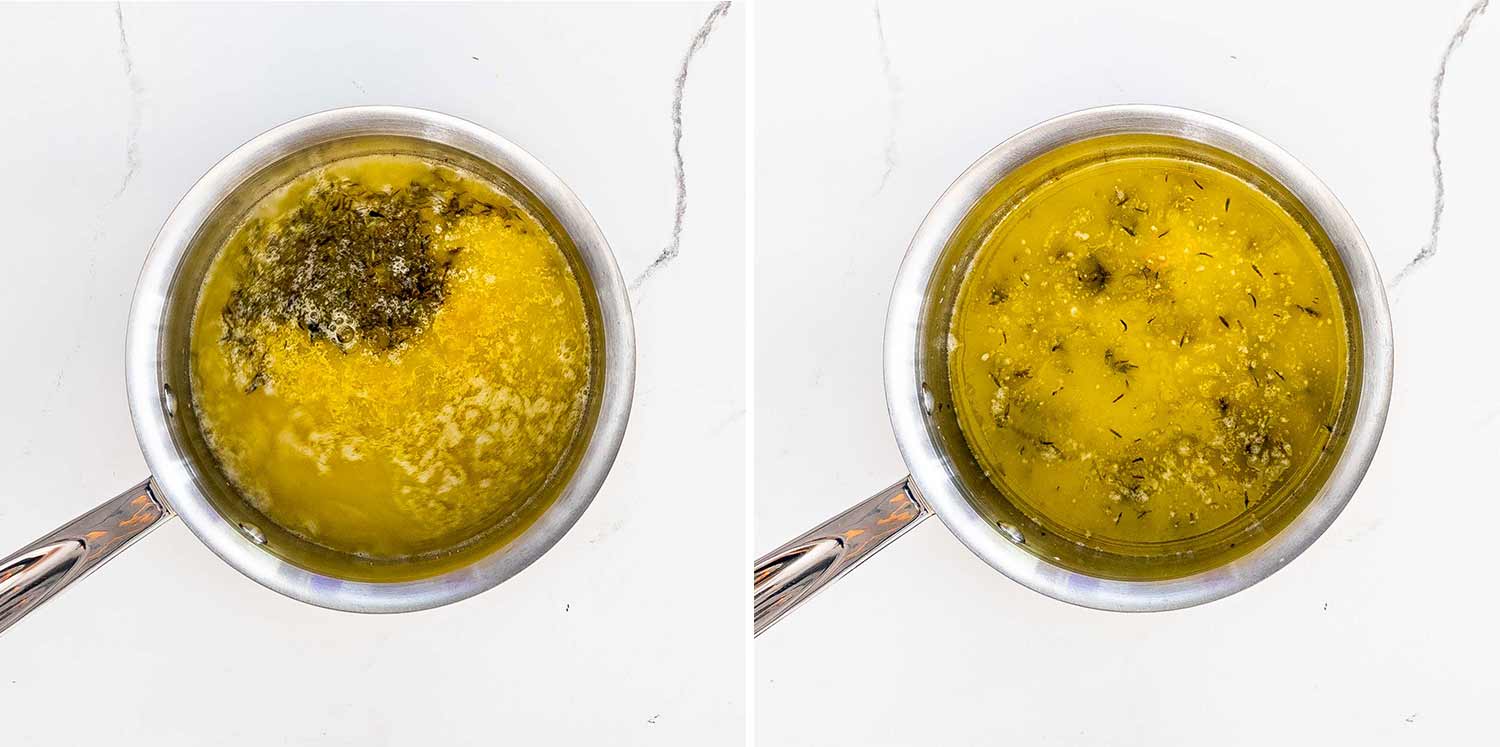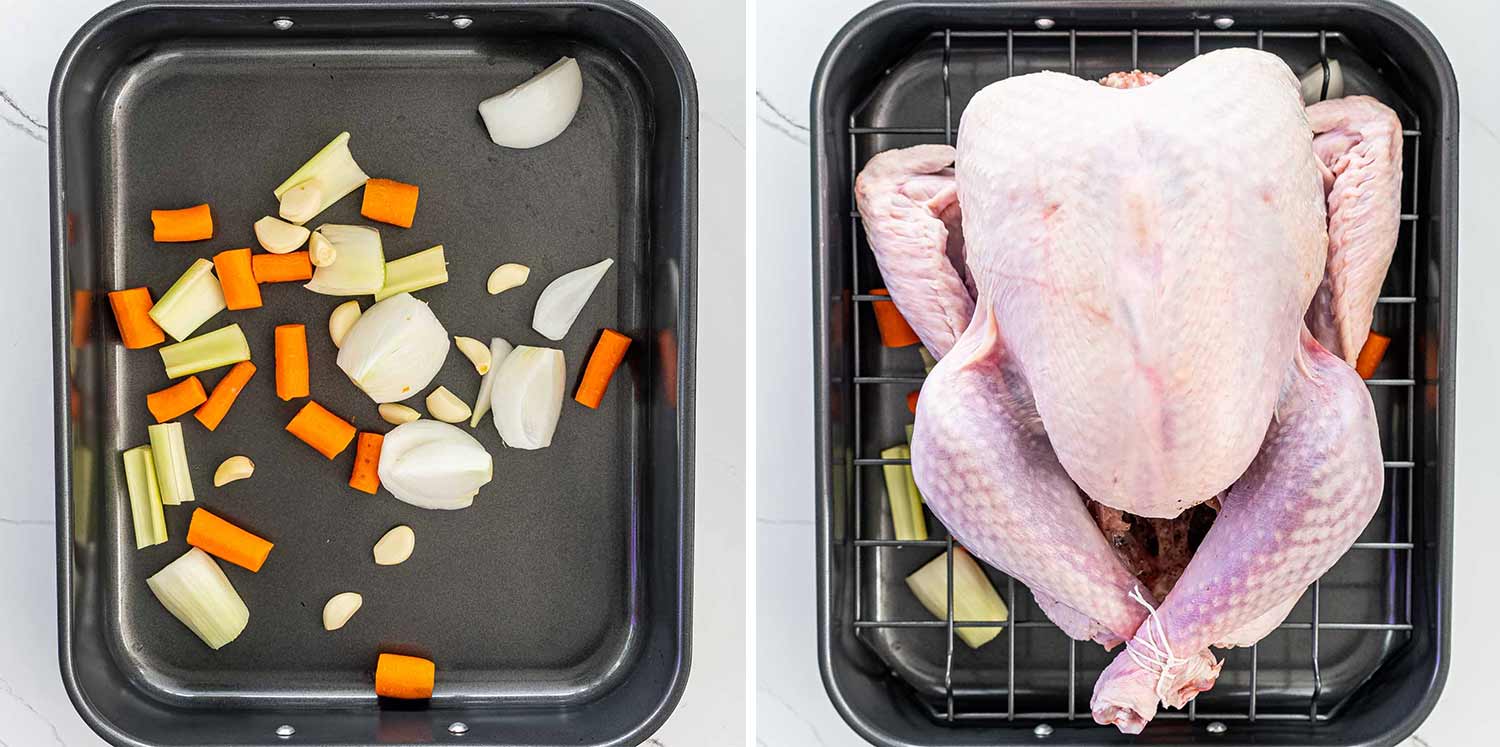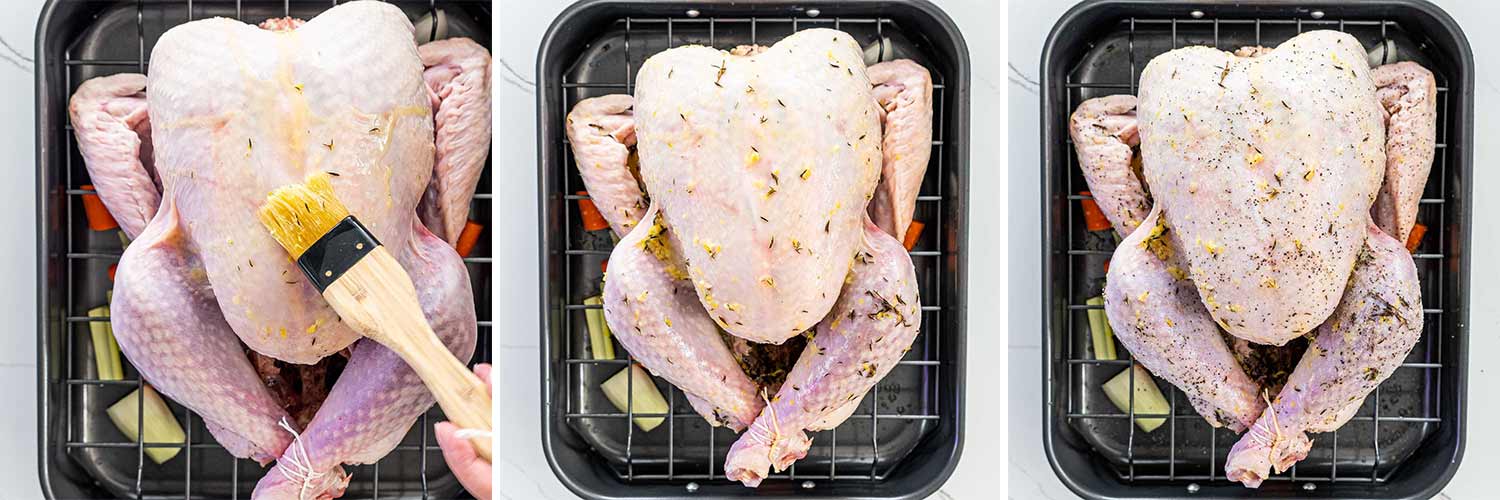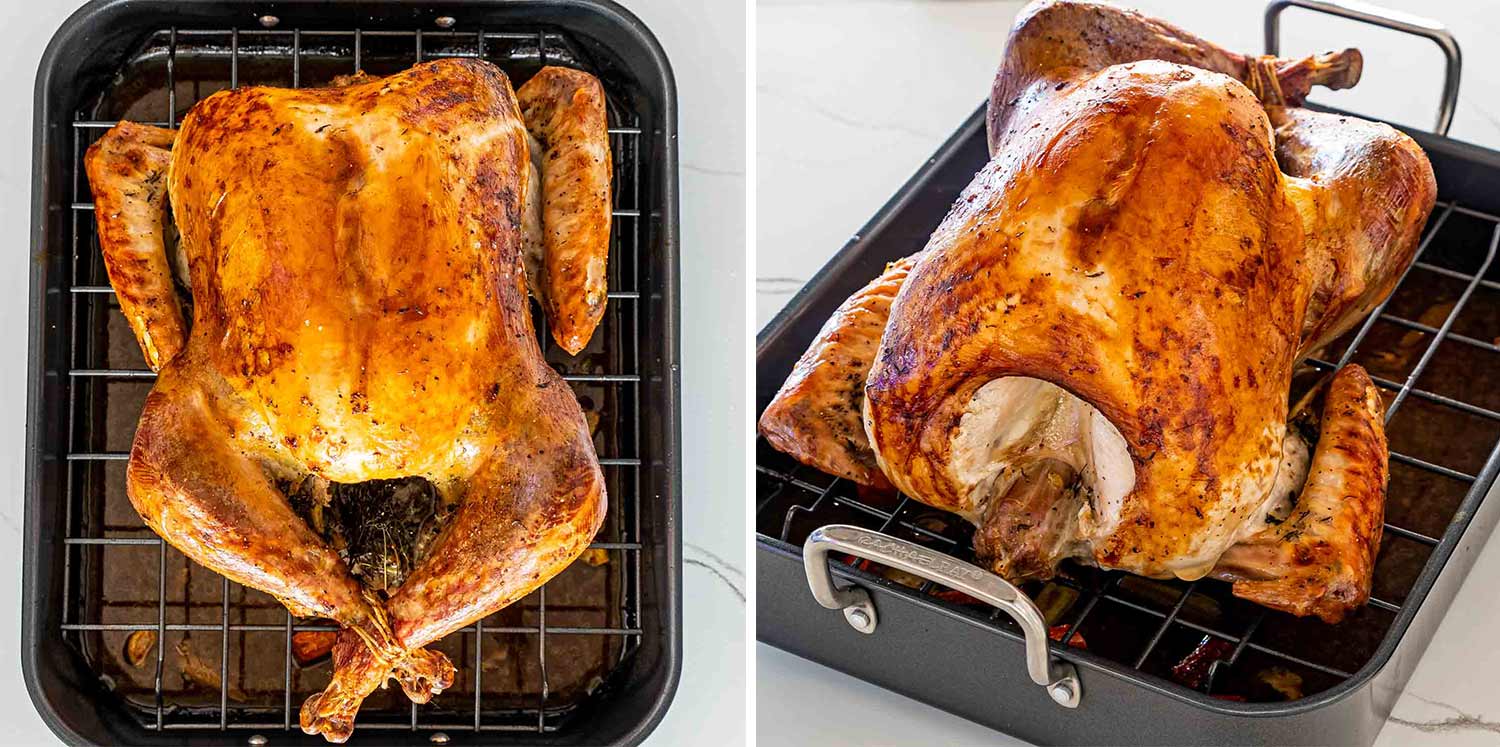How to Roast a Turkey – learn easy techniques to perfectly roast a turkey. Step by step instructions from start to finish.
Roasting a juicy, golden turkey with crispy skin is the ultimate Thanksgiving goal. But should you roast your turkey covered or uncovered? The best technique is to roast it partially covered then uncovered. Here’s why.
Why Partial Covering Is Best
For the most flavorful and moist turkey you’ll want to roast it partially covered and partially uncovered
-
Covering the turkey initially traps moisture and steam inside, preventing it from drying out as it cooks.
-
Then uncovering it for the last 30 minutes allows the skin to crisp up nicely in the dry oven heat.
According to cooking experts, this dual method gives you the best of both worlds – a tender, juicy interior and crispy browned skin.
How to Partially Cover Your Turkey
Here are a few easy ways to partially cover your turkey while roasting:
-
Use a roasting pan with a loose foil tent over the breast. Remove foil for the last half hour.
-
Cover with foil, then uncover just the breast and drumsticks for crisping.
-
Roast in a covered roaster, then remove lid for the end to crisp the skin.
-
Drape cheesecloth soaked in butter/herbs over turkey, remove later.
-
Start breast-side down, then flip and finish breast-side up uncovered.
No need to overcomplicate it. Partial covering works well with any standard roasting method.
Why You Should Avoid Full Coverage
Although covering a turkey completely can help retain moisture, it prevents the skin from crisping properly in the dry oven heat.
Covering the entire turkey the whole time often results in soft, rubbery skin. Not appetizing!
And if you use a tight foil seal, it can block airflow needed for even cooking and skin browning.
For food safety, you also want to avoid raising the temperature too high trying to crisp the skin on a fully covered bird. This leads to undercooking.
Don’t Roast Uncovered Completely Either
On the flip side, avoiding any coverage at all can seriously dry out your turkey as moisture rapidly evaporates.
Without a cover, the delicate breast meat is exposed to more direct heat than the legs and thighs. This often causes uneven cooking.
And radiant oven heat will rapidly crisp the skin before the interior finishes cooking.
While uncovered roasting produces a gorgeous brown exterior, it risks drying out the inside.
How Moisture Helps Roast a Turkey
Covering a turkey during the majority of roasting time helps:
-
Retain natural moisture in the meat.
-
Trap steam released from the turkey as it cooks.
-
Prevent the exterior from crisping too quickly.
-
Reflect heat for more even interior cooking.
This moisture under the cover gently braises the turkey, keeping it tender and juicy as the temperature rises.
Allow Time for Uncovered Crisping
Be sure to remove any cover in time for the skin to crisp up.
Calculate when to uncover based on your turkey’s total roasting time.
For a 15 lb turkey roasted at 325°F, uncover it for the last 30 minutes of the approximate 3 hour total cooking time.
If using a lower temperature like 250°F, give it a full 45-60 minutes uncovered for crisping.
Handling a Raw Turkey
When handling a raw turkey:
-
Keep it chilled in the fridge until ready to roast.
-
Don’t wash it – this can spread bacteria. Just pat dry.
-
Be sure to keep raw meat away from foods that won’t be cooked.
-
Sanitize any surfaces the raw turkey touches.
-
Roast immediately after removing giblets and neck.
Add Flavor Under the Skin
For extra flavor and moisture, try this tip:
-
Loosen skin from the breast meat gently.
-
Rub butter or oil under the skin.
-
Add sliced herbs, lemons, garlic, or seasoning blends.
-
The steam will infuse the turkey with flavor.
Trussing for Even Cooking
Trussing (tying up) the legs and wings:
-
Creates a more even shape for roasting.
-
Allows the interior to cook evenly.
-
Lets the skin crisp up more evenly.
So for the perfect turkey, remember to start covered, finish uncovered, and savor the juicy flavored meat and crispy skin!

Make The Herb Butter Mixture

In a small saucepan melt the butter over medium heat. Add the lemon zest and juice and the teaspoon of thyme to the butter and stir. Set aside.

First, you’ll need to place the onions, celery and carrots in the bottom of a roasting rack, then place the rack on top. Place the turkey breast side up on top of the roasting rack.
Tuck the wing tips under the body of the turkey, this will help stabilize the turkey when carving, plus it makes it easier to carve the breast. Tie the legs together with butcher twine.

Brush the turkey with the butter mixture generously over the entire turkey. Use all the butter. Next, you’ll want to season it with salt and pepper all around. Make sure to season a bit inside the cavity as well.
You can pour a little of water in the bottom of the roasting pan, but keep in mind the turkey will release drippings as well as it cooks. However, if you’re making gravy, it’s best to add about a cup of water to the roasting pan.
Uncover And Finish Roasting

Continue roasting for an additional 1½ hours until the turkey turns golden brown and is fully cooked inside. You can baste it every 30 minutes if preferred. The turkey is done when the thigh meat reaches an internal temperature of 180°F and the breast reaches 165°F.
Do you cook a turkey covered or uncovered?
FAQ
Should a turkey be cooked, covered or uncovered?
Do you put water in the bottom of the roasting pan for turkey?
Do you cook a turkey covered or uncovered Butterball?
Is it better to cook turkey at 325 or 350?
